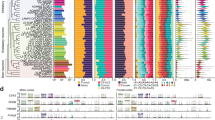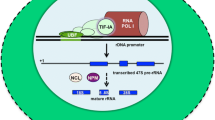Abstract
Hexanucleotide repeat expansion in C9ORF72 gene is the most common genetic cause of amyotrophic lateral sclerosis and frontotemporal dementia (C9ALS/FTD). Loss of C9ORF72 protein function and a toxic gain-of-function directly by the RNA or RAN translation have been proposed as triggering pathological mechanisms, along with the accumulation of TDP-43 protein. In addition, mitochondrial defects have been described to be a major driver of disease initiation. Mitochondrial DNA copy number has been proposed as a useful biomarker of mitochondrial dysfunction. The aim of our study was to determine the presence of mtDNA copy number alterations in C9ALS/FTD patients. Therefore, we assessed mtDNA copy number in postmortem prefrontal cortex from 18 C9ORF72 brain donors and 9 controls using digital droplet PCR. A statistically significant decrease of 50% was obtained when comparing C9ORF72 samples and controls. This decrease was independent of age and sex. The reduction of mtDNA copy number was found to be higher in patients’ samples presenting abundant TDP-43 protein inclusions. A growing number of studies demonstrated the influence of mtDNA copy number reduction on neurodegeneration. Our results provide new insights into the role of mitochondrial dysfunction in the pathogenesis of C9ALS/FTD.




Similar content being viewed by others
Availability of Data and Material
The datasets of the current study are available upon request with no restriction.
Code Availability
Not applicable.
References
DeJesus-Hernandez M, Mackenzie IR, Boeve BF et al (2011) Expanded GGGGCC hexanucleotide repeat in noncoding region of C9ORF72 causes chromosome 9p-linked FTD and ALS. Neuron 72:245–256
Renton AE, Majounie E, Waite A et al (2011) A hexanucleotide repeat expansion in C9ORF72 is the cause of chromosome 9p21-linked ALS-FTD. Neuron 72:257–268
Gijselinck I, Van Langenhove T, van der Zee J et al (2012) A C9orf72 promoter repeat expansion in a Flanders-Belgian cohort with disorders of the frontotemporal lobar degeneration-amyotrophic lateral sclerosis spectrum: a gene identification study. Lancet Neurol 11:54–65
Lee YB, Chen HJ, Peres JN et al (2013) Hexanucleotide repeats in ALS/FTD form length-dependent RNA foci, sequester RNA binding proteins, and are neurotoxic. Cell Rep 5:1178–1186
Rodriguez CM, Todd PK (2019) New pathologic mechanisms in nucleotide repeat expansion disorders. Neurobiol Dis 130:104515
Green KM, Linsalata AE, Todd PK (2016) RAN translation-what makes it run? Brain Res 1647:30–42
Saberi, S. Stauffer JE, Jiang J, et al. (2018) Sense-encoded poly-GR dipeptide repeat proteins correlate to neurodegeneration and uniquely co-localize with TDP-43 in dendrites of repeat-expanded C9orf72 amyotrophic lateral sclerosis. Acta Neuropathol 135: 459–474.
Sakae, N. Bieniek KF, Zhang YJ, et al. (2018) Poly-GR dipeptide repeat polymers correlate with neurodegeneration and clinicopathological subtypes in C9ORF72-related brain disease. Acta Neuropathol Commun 6: 63.
Mackenzie IR, Frick P, Neumann M (2014) The neuropathology associated with repeat expansions in the C9ORF72 gene. Acta Neuropathol 127:347–357
Babić Leko M, Župunski V, Kirincich J et al (2019) Molecular mechanisms of neurodegeneration related to C9orf72 hexanucleotide repeat expansion. Behav Neurol 2019:2909168
Lee SR, Han J (2017) Mitochondrial nucleoid: shield and switch of the mitochondrial genome. Oxid Med Cell Longev 2017:8060949
Podlesniy P, Figueiro-Silva J, Llado A et al (2013) Low cerebrospinal fluid concentration of mitochondrial DNA in preclinical Alzheimer disease. Ann Neurol 74:655–668
Podlesniy P, Vilas D, Taylor P et al (2016) Mitochondrial DNA in CSF distinguishes LRRK2 from idiopathic Parkinson’s disease. Neurobiol Dis 94:10–17
Choi SY, Lopez-Gonzalez R, Krishnan G et al (2019) C9ORF72-ALS/FTD-associated poly(GR) binds Atp5a1 and compromises mitochondrial function in vivo. Nat Neurosci 22:851–862
Lopez-Gonzalez R, Lu Y, Gendron TF et al (2016) Poly(GR) in C9ORF72-related ALS/FTD compromises mitochondrial function and increases oxidative stress and DNA damage in iPSC-derived motor neurons. Neuron 92:383–391
Alvarez-Mora MI, Podlesniy P, Gelpi E et al (2019) Fragile X-associated tremor/ataxia syndrome: regional decrease of mitochondrial DNA copy number relates to clinical manifestations. Genes Brain Behav 18:e12565
Cowan K, Anichtchik O, Luo S (2019) Mitochondrial integrity in neurodegeneration. CNS Neurosci Ther 25:825–836
Wang W, Osenbroch P, Skinnes R et al (2010) Mitochondrial DNA integrity is essential for mitochondrial maturation during differentiation of neural stem cells. Stem Cells 28:2195–2204
Szklarczyk R, Nooteboom M, Osiewacz HD (2014) Control of mitochondrial integrity in ageing and disease. Philos Trans R Soc Lond B Biol Sci 369:20130439
Wei W, Keogh MJ, Wilson I et al (2017) Mitochondrial DNA point mutations and relative copy number in 1363 disease and control human brains. Acta Neuropathol Commun 5:13
Petersen MH, Budtz-Jørgensen E, Sørensen SA et al (2014) Reduction in mitochondrial DNA copy number in peripheral leukocytes after onset of Huntington’s disease. Mitochondrion 17:14
Rice AC, Keeney PM, Algarzae NK et al (2014) Mitochondrial DNA copy numbers in pyramidal neurons are decreased and mitochondrial biogenesis transcriptome signaling is disrupted in Alzheimer’s disease hippocampi. J Alzheimers Dis 40:319–330
Khalil B, Liévens JC (2017) Mitochondrial quality control in amyotrophic lateral sclerosis: towards a common pathway? Neural Regen Res 12:1052–1061
Dafinca R, Scaber J, Ababneh N et al (2016) C9orf72 hexanucleotide expansions are associated with altered endoplasmic reticulum calcium homeostasis and stress granule formation in induced pluripotent stem cell-derived neurons from patients with amyotrophic lateral sclerosis and frontotemporal dementia. Stem Cells 34:2063–2078
Paillusson S, Stoica R, Gomez-Suaga P et al (2016) There’s something wrong with my MAM; the ER-mitochondria axis and neurodegenerative diseases. Trends Neurosci 39:146–157
Davidson YS, Barker H, Robinson AC et al (2014) Brain distribution of dipeptide repeat proteins in frontotemporal lobar degeneration and motor neurone disease associated with expansions in C9ORF72. Acta Neuropathol Commun 2:70
Mackenzie IR, Arzberger T, Kremmer E et al (2013) Dipeptide repeat protein pathology in C9ORF72 mutation cases: clinico-pathological correlations. Acta Neuropathol 126:859–879
Zu T, Liu Y, Banez-Coronel M et al (2013) RAN proteins and RNA foci from antisense transcriptsinC9ORF72ALSandfrontotemporaldementia. Proc Natl Acad Sci 110:E4968–E4977
Lee YB, Baskaran P, Gomez-Deza J et al (2017) C9orf72 poly GA RAN-translated protein plays a key role in amyotrophic lateral sclerosis via aggregation and toxicity. Hum Mol Genet 26:4765–4777
Chew J, Gendron TF, Prudencio M et al (2015) Neurodegeneration. C9ORF72 repeat expansions in mice cause TDP-43 pathology, neuronal loss, and behavioral deficits. Science 348:1151–1154
Gendron TF, Petrucelli L (2018) Disease mechanisms of C9ORF72 repeat expansions. Cold Spring Harb Perspect Med 8:a024224
Rose J, Brian C, Woods J et al (2017) Mitochondrial dysfunction in glial cells: implications for neuronal homeostasis and survival. Toxicology 391:109–115
Ramos-Campoy O, Avila-Polo R, Grau-Rivera O et al (2018) Systematic screening of ubiquitin/p62 aggregates in cerebellar cortex expands the neuropathological phenotype of the C9orf72 expansion mutation. J Neuropathol Exp Neurol 77:703–709
Briston T, Hicks AR (2018) Mitochondrial dysfunction and neurodegenerative proteinopathies: mechanisms and prospects for therapeutic intervention. Biochem Soc Trans 46:829–842
Mackenzie IR, Frick P, Grässer FA et al (2015) Quantitative analysis and clinico-pathological correlations of different dipeptide repeat protein pathologies in C9ORF72 mutation carriers. Acta Neuropathol 130:845–861
Schludi MH, May S, Grasser FA et al (2015) Distribution of dipeptide repeat proteins in cellular models and C9orf72 mutation cases suggests link to transcriptional silencing. Acta Neuropathol 130:537–555
Montine T, Phelps CH, Beach TG et al (2012) (2012) National Institute on Aging-Alzheimer’s Association guidelines for the neuropathologic assessment of Alzheimer’s disease: a practical approach. Acta Neuropathol 123:1–11
Acknowledgements
We are grateful to the Neurological Tissue Bank of the Biobanc Hospital Clinic-IDIBAPS, Barcelona, Spain, for the sample and data procurement. We thank patients and relatives for generous brain donation for research. We thank Núria Serra for providing technical assistance in ddPCR experiments. The CIBER de Enfermedades Raras y Neurodegenerativas are initiatives of the Instituto de Salud Carlos III. Preliminary data was presented in the 53rd European Society of Human Genetics (ESHG) Conference as an interactive e-Poster, June 6-9, 2020 (Eur J Hum Genet 28, 141–797 (2020). https://doi.org/10.1038/s41431-020-00739-z).
Funding
This work was supported by the Instituto de Salud Carlos III (PI17/01067), co-financed by Fondo Europeo de Desarrollo Regional (FEDER) “una manera de hacer Europa,” AGAUR from the Autonomous Catalan Government (2017SGR1134), and Ministerio de Ciencia, Innovación y Universidades (SAF2017-89791-R).
Author information
Authors and Affiliations
Contributions
Maria Isabel Alvarez-Mora: formulation and evolution of overarching research goals. Preparation and presentation of the published work
Petar Podlesniy: development and design of methodology
Teresa Riazuelo and Nuria Serra: conducting research and investigation process
Laura Molina: provision of study materials and preparation of the published work
Ellen Gelpi: preparation and presentation of the published work and critical review.
Laia Rodriguez-Revenga: formulation and evolution of overarching research goals. Preparation and presentation of the published work
Corresponding author
Ethics declarations
Ethics Approval
All procedures performed in studies involving human participants were in accordance with the ethical standards of the institutional and/or national research committee and with the 1964 Helsinki declaration and its later amendments or comparable ethical standards. The study was approved by the Ethics Committee of the Hospital Clinic of Barcelona. Brain samples were obtained from the Hospital Clinic-IDIBAPS Brain Bank under approved protocols of the Ethical Committee (Hospital Clinic Barcelona, Spain).
Consent for Publication
Not applicable.
Consent to Participate
Not applicable.
Conflict of Interest
The authors declare no competing interests.
Additional information
Publisher's Note
Springer Nature remains neutral with regard to jurisdictional claims in published maps and institutional affiliations.
Rights and permissions
About this article
Cite this article
Alvarez-Mora, M.I., Podlesniy, P., Riazuelo, T. et al. Reduced mtDNA Copy Number in the Prefrontal Cortex of C9ORF72 Patients. Mol Neurobiol 59, 1230–1237 (2022). https://doi.org/10.1007/s12035-021-02673-7
Received:
Accepted:
Published:
Issue Date:
DOI: https://doi.org/10.1007/s12035-021-02673-7




